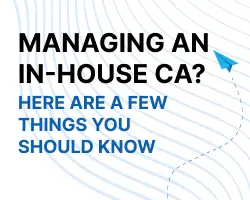如今,每个人都必须警惕自己的税务和财务信息落入不法之徒手中。随着税务申报流程为适应用户习惯变化而日益数字化与即时化,用户的攻击面正呈指数级扩大——尤其当用户未采取基本安全防护措施且缺乏必要安全意识时。
在人们持续关注数字身份完整性保护的背景下,一种攻击手段正迅速蔓延。近年来,税务欺诈和网络诈骗的严重程度与发生频率已然演变成一场肆虐的流行病。
数字化转型正在加速推进于众多国家和国际政府服务领域;美国已于2025年实现绝大多数人(截至本文撰写时达1.36 亿人)在线提交纳税申报表,英国则宣布自2026年4月起强制实施“数字化纳税”(MTD)要求,要求纳税人必须以数字化形式记录收支明细。其他国家也在推行类似措施,但这并未降低对强健网络安全和数字身份保护的需求。这恰恰说明需要采取更严格、更主动的措施。
纳税人切勿仅因数字化报税流程的便捷省时而心生向往。无论以往流程多么繁琐,在每个环节保持网络警惕仍是明智之举。对网络安全专业人士而言,洞悉看似合法的税务申报流程如何伪装成复杂的社会工程学与信息窃取骗局至关重要。这关乎赋予每个人自信守护个人信息的能力,同时维护国家关键基础设施的安全规范。
常见的税务申报骗局
最常见的税务欺诈骗局之一涉及网络钓鱼攻击,通常伪装成来自美国国税局(IRS)或英国税务海关总署(HMRC)等权威机构的邮件。此类邮件通过措辞营造紧迫感,诱使用户申请虚构的退税或回应不存在的刑事指控。然而近期趋势显示,网络钓鱼攻击手段已进化到利用人类心理弱点的程度。
微软近期安全情报显示,2025年2月12日至28日期间,超过2300家机构收到以税务为主题的钓鱼邮件,主要集中在美国工程、IT和建筑行业。这些攻击经过精心策划与执行,专门针对拥有重要知识产权和财务数据的组织。
网络安全从业者普遍认为,人工智能(AI)正被越来越多地用于编写更具说服力的钓鱼信息和邮件,使其显得更“合法”且具有欺骗性的人类说服力。预计未来将出现更多利用AI伪造的美国国税局(IRS)或英国税务海关总署(HMRC)信函,随着时间推移,传统防范手段将逐渐失效。
税务申报诈骗的常见警示信号
防范任何金融或税务申报欺诈行为的第一道防线,归根结底在于理解数字证书和安全连接。
合法税务网站(包括美国国税局、州税务机构及经批准的税务软件供应商)均采用扩展验证 (EV) SSL/TLS证书,该证书提供最高级别的身份验证。此类证书需经过严格审核流程,以验证组织的合法存在及运营控制权。
访问任何税务相关网站时,网络安全专业人员应立即检查浏览器地址栏中的SSL/TLS证书(以锁形图标为标志),验证证书链是否可追溯至可信证书颁发机构,并确认域名是否与政府机构或认可的税务软件供应商相符。
通常可通过识别域名验证型(DV)证书甚至伪造证书来判断税务网站是否存在欺诈行为。DV证书虽提供加密功能,却无法验证托管机构的身份真实性。此时,电子邮件认证协议,包括SPF、DKIM和DMARC便能发挥作用,用于确认税务相关通信的真实性。授权机构和监管部门均采用这些协议,若网站未部署相关协议则应引起警惕。
此外,真实的税务文件通常包含基于有效PKI 基础设施的数字签名。这些加密签名提供了不可否认性和完整性验证,若未持有私钥,几乎不可能伪造。
新兴金融诈骗威胁
- 机器学习(ML)在欺诈检测中的应用: 随着恶意行为者部署更多基于人工智能的攻击手段,企业必须以更强大的检测能力予以应对。现代欺诈检测系统必须配备同等快速响应的技术,能够分析行为模式、检测文档异常(通常在像素级别)、交叉比对多数据源信息,并提供实时威胁情报。这使人类决策者能够基于情报采取行动,而这些情报在人工审查中可能被遗漏。
- 合成身份欺诈: 现代税务欺诈中出现的新兴挑战涉及制造虚假身份与人物形象,这些身份通过融合真实与虚假信息构建而成。此类身份可通过基础级验证检查,从而绕过初始安全协议持续实施欺诈活动。必须在多数据源与平台间实现检测能力的指数级提升,以持续监控疑似虚假用户的活动,并将其与真实用户区分开来。
面对日益猖獗的税务申报欺诈,组织机构该如何应对?
处理大规模税务数据的组织应考虑实施全面框架,包括:
- 用于保护税务文件处理和数字签名中使用的加密密钥的硬件安全模块(HSMs)
- 多因素身份验证(MFA)采用基于证书的身份验证作为其中一种因素,为身份验证提供强有力的基础层保障。
- 零信任架构(ZTA)持续验证每项交易和访问请求,无论其来源位置如何
- 基于人工智能的威胁检测技术,实现高级电子邮件安全防护
- 在整个组织资产范围内实施全天候事件响应流程,定期开展红队演练和渗透测试以验证安全团队的响应效能
此外,网络流量需要进行全面而彻底的监控,并严格遵守保护标准。这包括对来自可信且经过验证的税务机关的所有通信实施证书固定(以防止中间人攻击),通过DNS过滤阻止访问已知的欺诈性或可疑域名,以及采用网络分段技术将税务处理系统与开放网络隔离,从而形成额外的安全防护层。
税务专业人士应确保所有税务网站及相关软件的证书信息均可验证。在可行情况下,应部署文件安全传输协议及基于证书的认证措施。为维护更广泛的反欺诈和反洗钱工作成效,他们还应在同行及整个行业内共享更新的威胁情报。
选择GlobalSign,提升组织整体安全态势
随着数字税务管理在全球范围内日益普及,网络安全与税务合规的融合趋势将愈发明显。那些及早投资于强大的公钥基础设施、先进威胁检测技术及全面安全框架的企业,将能更好地应对日益复杂的挑战。
保持强大的网络安全防护能力,需要以自信的态度适应新环境与新发展,运用最新的公钥基础设施技术、证书管理及威胁情报,从而在日益复杂的网络攻击和蓄意恶意行为者面前保持领先优势。
如需了解有关实施PKI解决方案和数字证书以增强税务安全性的更多信息,请探索GlobalSign的企业安全解决方案和证书管理平台。
注:本文系特邀作者为本博客撰写,旨在为读者提供更丰富的内容。文中观点仅代表作者个人立场,未必反映GlobalSign的立场。






